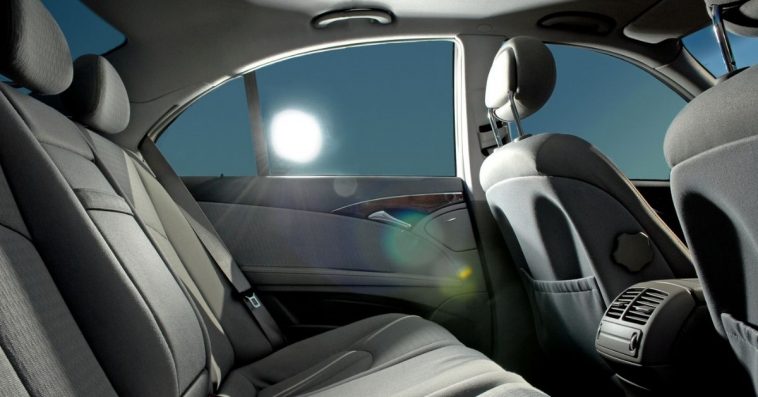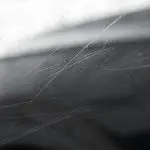The market size for tint films applied to car windows is growing quickly. The growth complies with the increased number of cars that feature tinted windows.
People tint their vehicle windows for various reasons. Reducing the effect of sunlight on the eyes remains one of the primary reasons for tinted windows, while some people also prefer the reduced light transmission for enhanced privacy.
While it is generally considered legal to apply tinting to your car’s windows, there are regulations that affect the darkness of these films.
Applying an exceptionally dark tint can cause problems with your vision – and this leads to an increased risk of accidents on the road.
Each state has its own laws regarding tint percentages, reflective surfaces, and other related factors, which we will discuss in this article.
TABLE OF CONTENTS
Why Do People Tint Their Windows?
Tinting of windows in a vehicle is done for different reasons. While there are some who install these films for illicit purposes, the average person wants to enjoy the added privacy and improved protection that comes from tinted windows.
Here are a few reasons why people generally tend to tint their windows:
- The tinting of windows helps to reduce glare from sunlight. This is an effective way of preventing a blinding effect when driving while the sun is out.
- Many people find that the reduced glare improves their overall comfort while riding in a car.
- Upholstery in the car, as well as any items made from plastic materials, are protected from the effects that sunlight tends to have on them. This may help to extend the lifespan of the car’s interior.
Why Are Tint Percentages Restricted By Law?
Even though tinted windows have a protective effect on the passengers and the car itself and create a sense of improved privacy, there are dangers that can come with this feature.
In particular, tint that is very dark can reduce a person’s vision – especially at night when there is no sunlight available. When a person’s vision is limited due to a dark tint, then they have a higher risk of being involved in an accident.
This does not only put the individual in danger. It also risks the lives of other people on the road – in cars and pedestrians walking across the stress.
Additionally, dark tinted windows also make it harder for police and cops to realize what to expect during an inspection. Criminals may often drive in cars with illegal tinting – this limits the cop’s ability to observe items and people inside the vehicle.
Can You Get Pulled Over For Having Tinted Windows?
A common question people have when they consider having a tint film installed on their windows is whether or not they can get pulled over by the cops. The police and cops generally have a good idea of how dark tinting should be on vehicles within the state they serve.
This makes it relatively easy for them to spot vehicles with a tint or reflection that is above the allowed levels, according to the local state laws. If cops find that a car’s tint seems too dark, then they will most likely pull the vehicle over.
The cops will usually have a little device with them that allows the VLT, or the visual light transmission, of your windows to be measured. The device will provide the cop with a reading of the light that is transmitted through the tint film.
In cases where the tint complies with local laws, the cops will let you leave. Should the tint be too high according to the laws in your area, then the cop will write out a ticket.
In addition to the issuing of a ticket, the cop will also advise you to get the tinting fixed. You will need to get the tint films removed from your car. You then have the choice of installing a new tint that complies with local laws in the state.
A specific time period will be given for you to fix the tint. Following this period, an inspection of your car is needed.
During the inspection, the cops will determine if you have lowered the darkness of the tint. If the tint remains unmodified since the time a ticket was issued, an additional surcharge may apply to the fine.
How Much Can Cops Fine You For Tinted Windows?
The amount requested for a fine related to a tint that is darker than the percentage allowed differs from state-to-state. Some states issue fines with a low amount attached to it, while others are stricter and demand a higher sum to be paid.
It is important that you educate yourself on the specific laws in your state, as this will usually provide details about how much a fine is for tinted windows that do not fall within the allowed spectrum.
There are some cases where a ticket may have a low sum attached to it, such as $20. Sometimes, however, these ticks can run to an amount over $200.
If you have been pulled over for tinted windows in the past, then your next ticket will be more than the first. This is why it is important to ensure you fix the tinting in the time given by the police.
What Are The Car Window Tint Percentage Laws By State?
Each state has its own laws regarding the tinting of car windows. You should learn about the laws in the state you reside in, as this will ensure you do not get pulled over for having tinted windows that are too dark.
Some states in the US are more lenient toward laws regulating window tinting. Others, however, have stricter regulations that you need to follow.
In this section, I share a complete overview of the laws related to tinting windows. I will share the data for each state in the US.
Look up your state to gain more details on what is allowed in your state below:
Windows Tint Percentage Chart
| State: | Windshield (From the top): | Rear Window: | Side Windows (Front): | Side Windows (Back): |
| Alabama | 6” | 32% | $32% | 32% |
| Alaska | 5” | 40% | 70% | 40% |
| Arizona | Manufacturer AS-1 Line | Any % | 32% | Any % |
| Arkansas | 5” | 10% | 25% | 25% |
| California | 4” | Any % | 70% | Any % |
| Colorado | 4” | 27% | 27% | 27% |
| Connecticut | Manufacturer AS-1 Line | Any % | 35% | 35% |
| Delaware | Manufacturer AS-1 Line | Any % | 70% | Any % |
| Florida | Manufacturer AS-1 Line | 15% | 28% | 15% |
| Georgia | 6” | 32% | 32% | 32% |
| Hawaii | 70% | 35% | 35% | 35% |
| Idaho | Manufacturer AS-1 Line | 35% | 35% | 20% |
| Illinois | 6” | 35% | 35% | 35% |
| Indiana | Manufacturer AS-1 Line | 30% | 30% | 30% |
| Iowa | Manufacturer AS-1 Line | Any % | 70% | Any % |
| Kansas | Manufacturer AS-1 Line | 35% | 35% | 35% |
| Kentucky | Manufacturer AS-1 Line | 18% | 35% | 18% |
| Louisiana | Manufacturer AS-1 Line | 12% | 40% | 25% |
| Maine | 4” | Any % | 35% | Any % |
| Maryland | 5” | 35% | 35% | 35% |
| Massachusetts | 6” | 35% | 35% | 35% |
| Michigan | 6” | Any % | Only 4” at the top may be tinted | Any % |
| Minnesota | Not allowed | 50% | 50% | 50% |
| Mississippi | Manufacturer AS-1 Line | 28% | 28% | 28% |
| Missouri | Manufacturer AS-1 Line | Any % | 35% | Any % |
| Montana | Manufacturer AS-1 Line | 14% | 24% | 14% |
| Nebraska | 5” | 20% | 35% | 20% |
| Nevada | Manufacturer AS-1 Line | Any % | 35% | Any % |
| New Hampshire | 6” | 35% | Not allowed | 35% |
| New Jersey | Not allowed | Any % | Not allowed | Any % |
| New Mexico | 5” | 20% | 20% | 70% |
| New York | 6” | Any % | 70% | 70% |
| North Carolina | Manufacturer AS-1 Line | 35% | 35% | 35% |
| North Dakota | 70% | Any % | 50% | Any % |
| Ohio | 70% | Any % | 50% | Any % |
| Oklahoma | 5” | 25% | 25% | 25% |
| Oregon | 6” | 35% | 35% | 35% |
| Pennsylvania | Not allowed | 70% | 70% | 70% |
| Rhode Island | Manufacturer AS-1 Line | 70% | 70% | 70% |
| South Carolina | Manufacturer AS-1 Line | 27% | 27% | 27% |
| South Dakota | Manufacturer AS-1 Line | 20% | 35% | 20% |
| Tennessee | Manufacturer AS-1 Line | 35% | 35% | 35% |
| Texas | 5” | Any % | 25% | 25% |
| Utah | Manufacturer AS-1 Line | Any % | 43% | Any % |
| Vermont | Manufacturer AS-1 Line | Any % | Not allowed | Any % |
| Virginia | Manufacturer AS-1 Line | 35% | 50% | 35% |
| Washington | 6” | 24% | 24% | 24% |
| West Virginia | 5” | 35% | 35% | 35% |
| Wisconsin | Manufacturer AS-1 Line | 35% | 35% | 35% |
| Wyoming | 5” | 28% | 28% | 28% |
The percentages presented in this table represent the visible light transmission required when applying tint to windows.
For example, if the window tint percentage is 40%, it means the film should allow at least 40% of light to pass through.
How Do Medical Exemptions Work?
There are a few states that allow medical exemptions to the laws surrounding window tinting. It is, however, important to note that this is not the case with all states.
Some states offer no acceptance policies for medical exemptions, even when a signed document is issued by a physician licensed to practice in the area.
In states where medical exemptions are allowed, it is important to learn when you may qualify. Only certain conditions would allow you to legally drive with a darker tint than what is allowed according to local state laws.
Some of the conditions that tend to qualify for a medical exemption, allowing the person to have a darker tint, include:
- The systematic lupus erythematosus (can cause flare-ups of arthritis symptoms, fatigue, kidney problems, and more when exposed to sunlight).
- Cockayne syndrome (causes higher sensitivity to light).
- Bloom syndrome (sunlight can cause rashes and patches on the skin).
- Solar urticaria (often referred to as a sun allergy, causing hives and other problems when the skin is exposed to sunlight).
- Albinism (Patients have a more extreme sensitivity to sunlight).
- Erythropoietic Protoporphyria (Burning sensation, inflammation, and pain when the person is exposed to the sun).
- Xeroderma pigmentosum (Skin and eye sensitivity to sunlight exposure).
Each state has specific regulations that need to be followed by people who need a medical exemption. If the state allows such an exemption, appropriate steps should be followed.
In some cases, a signed letter from a state-licensed physician needs to be sent to the government for review. Some states require the patient to have a sticker on their car that clearly marks their exemption.
When an exemption is given, it is still important to consider the regulations. There will still be limitations placed on the level of tint that may be applied to windows – the restrictions will just be a bit more lenient than standard laws surrounding tinting.
Conclusion
Tinted car windows have conveniences to offer and are considered essential for people with certain conditions. On the other hand, a tint that is too dark may cause a hazard for you, your family, and pedestrians on the road.
Understand the local state laws when tinting your windows, as this can help keep you safe and ensure you avoid a fine. In some cases, getting an exemption is possible, but not all states allow this.




